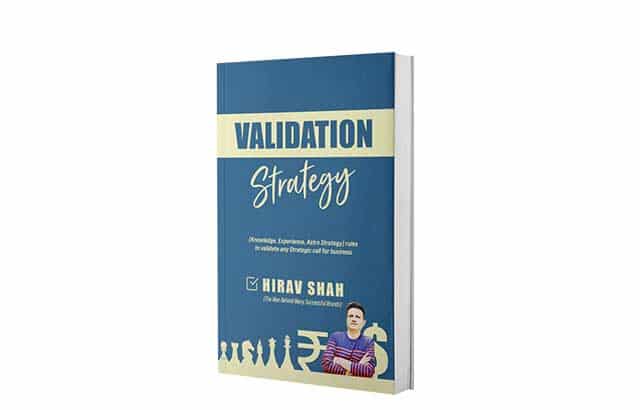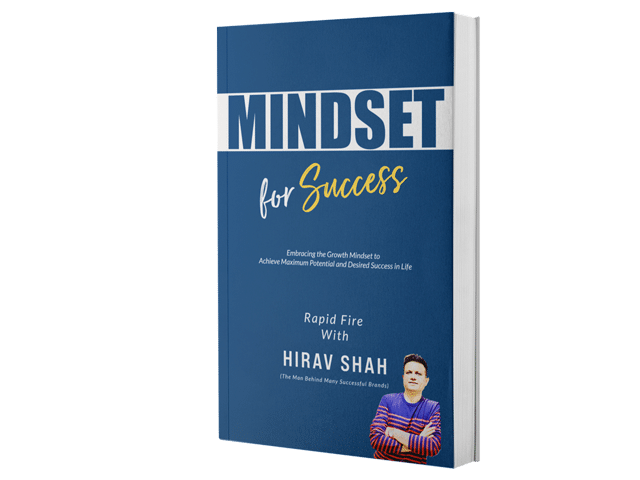Most of us prepared hard for the future we expected, and yet when it comes to our life, today things aren’t working out as we had planned. That’s true if you have been laid off; are a recent college graduate who is under-employed; a manager who feels that he is stuck in his current position ; a businessman whose business is not showing any signs of prosperity or partners whose love life is just not working.
This is not how we were told it was going to be.
Growing up we were led to believe that the future was predictable enough and if we worked hard, we could obtain “that thing” we wanted in an environment we understood, and we would live happy and successful lives.
In this context, Eminent Business Adviser & Astro-Business Strategist Hirav Shah Says,
“By failing to prepare, you are preparing to fail”.
Table of Contents
6 steps to life planning preparation
1. Get your priorities “crystal clear”
It’s easy to fill our lives with activities. Our schedules are often jam-packed with lots of good things. But too often, they don’t leave room for the really great things. And as a result, we sometimes end up giving our leftovers to the people and things that matter most to us.
Through the life planning process, you’ll identify the areas that are truly most important to you. These “accounts,” as we call them, will serve as filters to help you make intentional decisions about how you invest your time and energy.
2. Enhance Pull Power
Through the life planning process, you’ll identify your purpose and vision for each account you’ve identified. Purpose is the unique role that you alone play in that area. Vision is a clear picture of what that area will look like in the future. When combined, your purpose (why) and vision (future) serve as magnetic forces that will pull you forward.
They connect both your head and your heart and cause you to stretch and sacrifice. When things get tough (and they will), these two forces will remind you what’s important and help you make the best decisions, regardless of how you feel at that moment.
3. Take A Hard Look At Your Current Reality and Face It
One of the dangers of drift is its subtle nature. Step by step, one degree at a time, it will pull you off course. And often, we don’t realize how far we’ve drifted.
Taking the time to honestly assess where you’re at now in each of your accounts is a critical part of the process. It may be uncomfortable to face that truth, especially if some of your accounts are in particularly bad shape. But taking a hard look at current reality is often the wake-up call we need to find the motivation to move forward.
4. Have A Plan In Place
The habits we build so much of our lives upon are not easy to break out of. And without a plan to change our thinking or behaviors, we probably never will.
By identifying specific commitments to fill your days with the right activities, your life plan lays out a course to bridge the gap from where you are to where you want to be in every area of your life. Will it be perfect? No. Will you still fail and fall down? Yes. But with a plan in place, you can have clarity and confidence in the direction you’re headed.
5. Strengthen Your Vision Everyday
Getting the life you want is hard. Really hard. We have habits and thoughts that can pull us down or prevent us from getting where we want to go. So we need to stay true to our vision and keep strengthening it over and over to keep it alive when things don’t go our way. However you hold onto your dreams – by journaling or looking at a picture or spending five minutes seeing yourself as you want to be – do it every day. And then when you experience bumps, you won’t lose it, knowing that you will definitely get there at the end of the day.
And what is behind this process is believing, again and again, every day, that you are a creative being, that you can wish the life you want into being and make it a reality.
6. It Starts With One Day
None of us wants to be average. We all have dreams of achieving more, and chances are most of us have felt the pain and regret that come from drifting in the areas of our life that matter the most to us. But, things can be different.
Change can happen, change will happen and change is bound to happen, Avers Hirav Shah.
And it all starts with investing one day. That’s all it takes to get through the life-planning process. Invest one day, and you can walk away with a life plan that will have an immediate impact on your leadership and life. It’s no silver bullet, if you try it, you can become more intentional and experience greater health in every area of your life.
Final Thoughts
If you are looking at lives of happy people and successful people and thinking they are by fluke, then you are totally and absolutely wrong. Life planning is no accident. You have to make a decision to look inward, to reflect on and investigate your life experiences, to study the world around you, to examine your influences, to understand why you choose to make a profound impact, and then find a way to express that to the people with whom you live and work. The more you do what you say and the more you earn trust, the more people will emulate the example you set,Tells HIrav Shah.
Last but not the least, you can’t rest on your laurels. You must continuously practice and improve—visibly. People see your commitment to growth and they want to grow too. The positive behaviors start with you and radiate outwards, toward the entire environment from the inside-out, Concludes Hirav Shah.


























